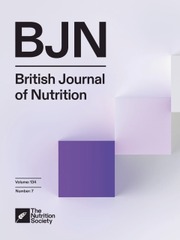No CrossRef data available.
Article contents
Illustration of a process for the calculation and validation of minimum dietary diversity indicators using an existing dataset of 2 to younger than 10-year-old children
Published online by Cambridge University Press: 10 April 2025
Abstract
This study aims to illustrate a process approach for the calculation of minimum dietary diversity (MDD) indicators for interpretation of dietary diversity (DD) scores and to validate the MDD indicator as a proxy for adequate micronutrient intake using an existing dataset for 2 to younger than 10-year-old South African children. The DD scores were derived from nine food groups, adjusted from the 10 food groups for women of reproductive age (MDD-W) by combining pulses, nuts and seeds. Three reference methods were used to inspect micronutrient adequacy, namely the mean adequacy ratio (MAR) and the mean probability of adequacy (MPA) using a single 24-hour recall, and the MPA derived from usual intake using more than one 24-hour recall in a sub-sample. Adequacy threshold levels and candidate MDD indicators were inspected and validated using several performance criteria. Results show that the mean and median DD scores were 3.6 and 3.1 respectively. The resulting MDD indicators varied between 3 and 4 out of 9 food groups favouring the identification of children with adequate and inadequate intake respectively, depending on the method used and the age group. Our results and those from others furthermore support a simplified method or ‘rule of thumb’ for the determination of an MDD indicator to establish the integer values below and above the median of the DD scores. We conclude that finding a valid MDD indicator can be done using different methodologies and that results underscore the potential of a simplified method for determining an MDD indicator.
Keywords
- Type
- Research Article
- Information
- Copyright
- © The Author(s), 2025. Published by Cambridge University Press on behalf of The Nutrition Society


